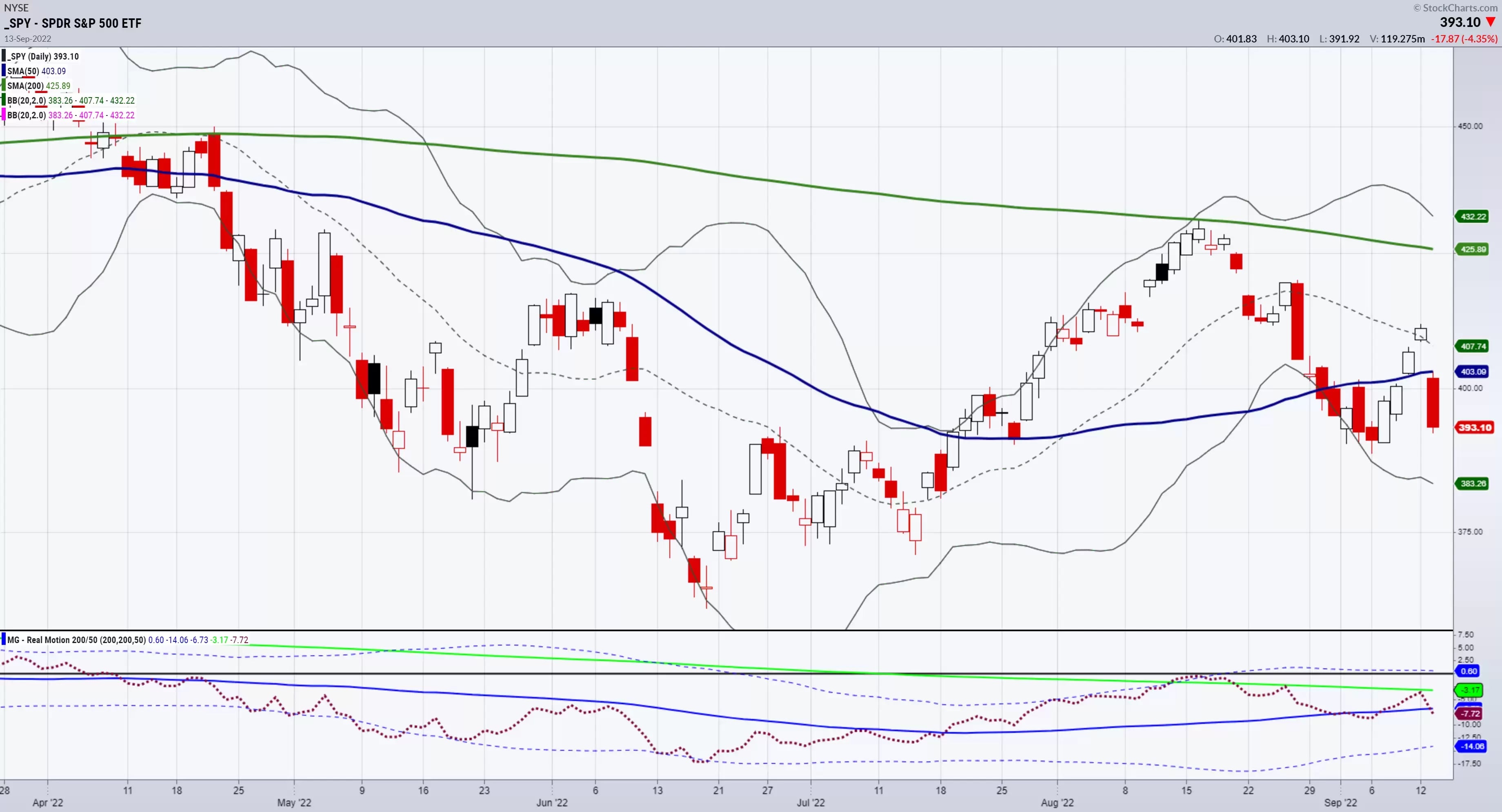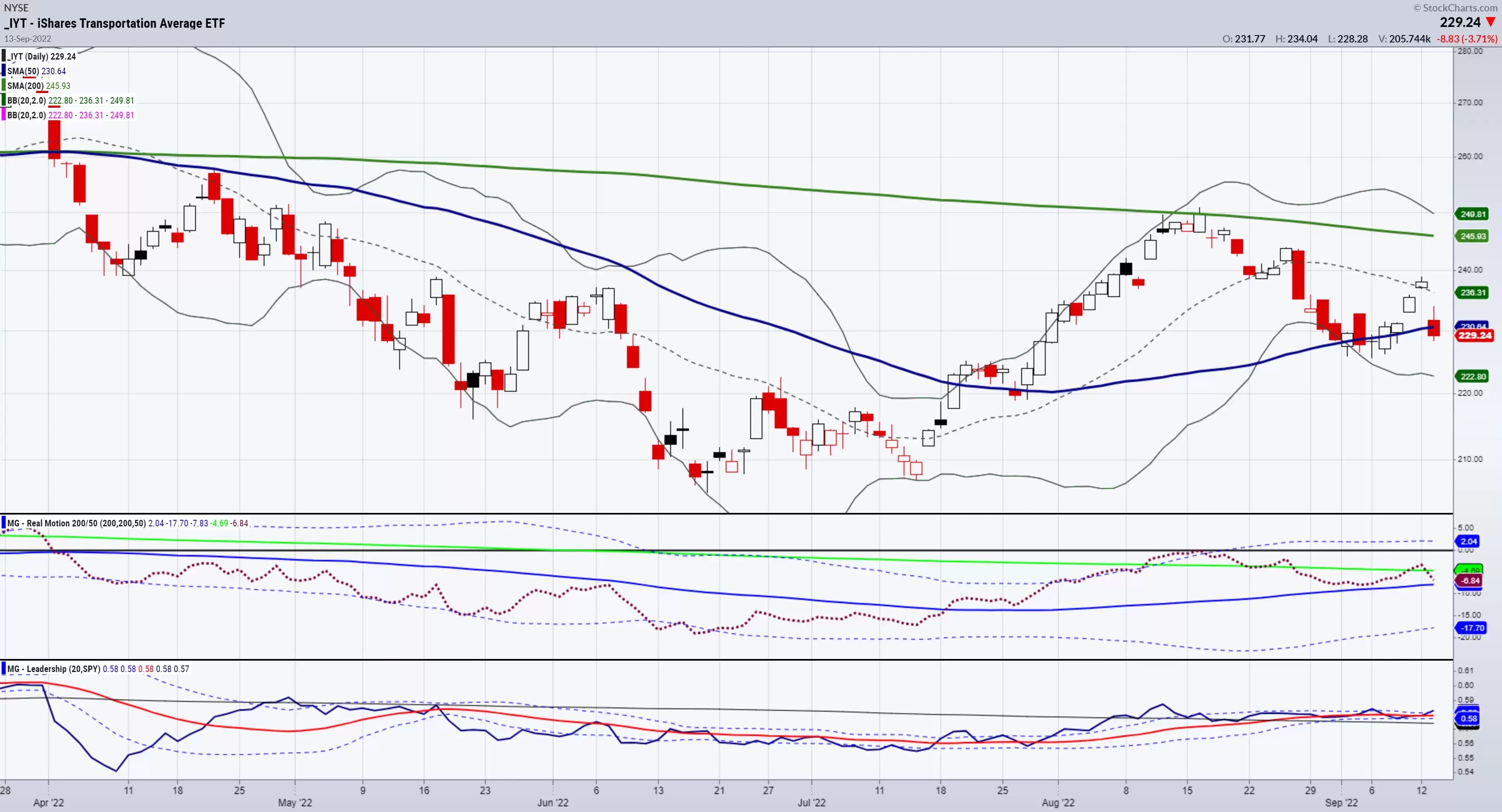
After a four-day rally, US markets sank yesterday as the consumer price index rose 8.3% in the year to August, hotter than the 8.1% that many economists had expected.
The uptick in inflation increases the likelihood that the US Federal Reserve will raise interest rates by 0.75 percentage points at its 20-21 September meeting. There is even a chance that the Fed may opt for a full percentage point rate hike.
Higher CPI and the prospect of further aggressive rate rises have dealt a blow to fading hopes of a soft landing for the US economy, with markets now reflecting investors’ recession fears.
How should investors respond? Below, we pick out three charts to watch and outline our trading ideas.
Junk bonds ETF down more than 2% this week
One reliable indicator that has offered a heads up on some major market rises and falls is the SPDR Barclays High Yield Bond ETF [JNK], the recent performance of which is shown below.

Unlike the major US indices, JNK did not clear its 50-day moving average (DMA; the blue line) during the recent rally. It’s therefore unsurprising that, after CPI came out, JNK gapped lower in price.
The chart also reveals a couple more notable takeaways. Although our MarketGauge Real Motion Indicator points to declining momentum, our proprietary Leadership Indicator shows that JNK is outperforming the S&P 500, the market benchmark.
The latter point suggests that, despite headlines about tumbling markets, bond traders see the risk environment as neutral. With JNK outperforming the S&P 500, our assumption is that bond yields could be peaking.
For bulls to use JNK as a trading indicator, the fund needs to hold 90.00 in the long term. Furthermore, JNK must at least recapture 92.50.
To embolden the bears, further weakness could see the risk-neutral environment develop in to a risk-off situation, in which bond traders might sell off riskier assets. A break below 90.00 could signal another leg lower in stock indices.
SPY has fallen almost 4% this week
The S&P 500 ETF [SPY], pictured below, failed to hold its 50-DMA (the blue line), dipping below 403 on Tuesday. However, if it can close back above 403, that could bring out more dip buyers.

One positive (or not-as-horrific-as-feared) sign is that our Real Motion Indicator is holding the 50-DMA. Secondly, the slope of the 50-DMA remains neutral.
There are some clear takeaways from the above JNK and SPY charts: risk remains neutral to slightly off, bonds traders remain cautiously optimistic, and the S&P 500 still seems to be trading in a range rather than signalling the end of days.
Transport ETF dips 3% this week
Last week’s article looked at the importance of keeping tabs on the iShares US Transportation ETF [IYT], shown below. Why does this fund matter? Because transport may hold the answer to the question of whether the US economy is heading for a soft landing or a deeper recession.

IYT seems to have priced in Tuesday’s hotter-than-expected CPI reading for August. Although further droughts, geopolitical strife, inflation spikes, supply chain issues and a proposed strike by US train workers could derail the fund, for now the price is sitting right on the 50-DMA (the blue line). Two closes under a major moving average qualify as a phase change, based on our analysis.
Our Real Motion Indicator shows a decline in momentum, but it remains well above the 50-DMA. And like JNK, IYT is outperforming the SPY benchmark. That tells us that the balance between supply and demand belies the doomsday headlines.
Moving forward, we will keep watching the key indicators discussed above – high-yield bonds, the S&P 500 and transportation. Their performance will continue to shape our near-term trading decisions.
Mish’s ETF support and resistance levels
S&P 500 (SPY) Unconfirmed return to bear phase, with second close needed to confirm; 389 is the first support level with additional support at 382, and resistance at 400
Russell 2000 (IWM) Unconfirmed return to bear phase; 178 support, 186.50 resistance
Dow (DIA) Unconfirmed return to bear phase; support at last week’s low of 310.90, resistance at 315
Nasdaq (QQQ) Unconfirmed return to bear phase; support at 292, resistance at 300
Regional banks (KRE) Unconfirmed return to bear phase; support at 62, resistance at 63.25
Semiconductors (SMH) 198 support, 210 resistance
Transportation (IYT) Unconfirmed return to bear phase; 226.80 support, resistance 233.50
Mish Schneider is MarketGauge’s director of trading education and research. Read more of MarketGauge’s market analysis here, and subscribe to their YouTube channel here. Mish Schneider's and MarketGauge's views and findings are their own, and should not be relied upon as the basis of a trading or investment decision. Pricing is indicative. Past performance is not a reliable indicator of future results.
Disclaimer: CMC Markets is an execution-only service provider. The material (whether or not it states any opinions) is for general information purposes only, and does not take into account your personal circumstances or objectives. Nothing in this material is (or should be considered to be) financial, investment or other advice on which reliance should be placed. No opinion given in the material constitutes a recommendation by CMC Markets or the author that any particular investment, security, transaction or investment strategy is suitable for any specific person. The material has not been prepared in accordance with legal requirements designed to promote the independence of investment research. Although we are not specifically prevented from dealing before providing this material, we do not seek to take advantage of the material prior to its dissemination.






















